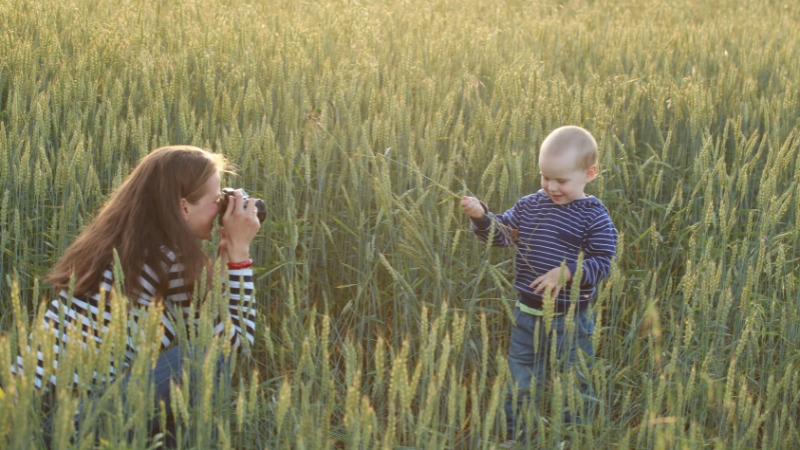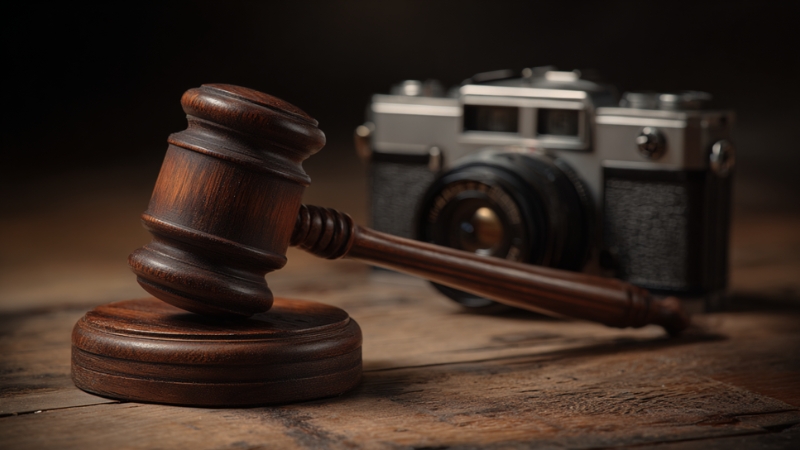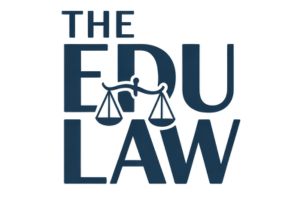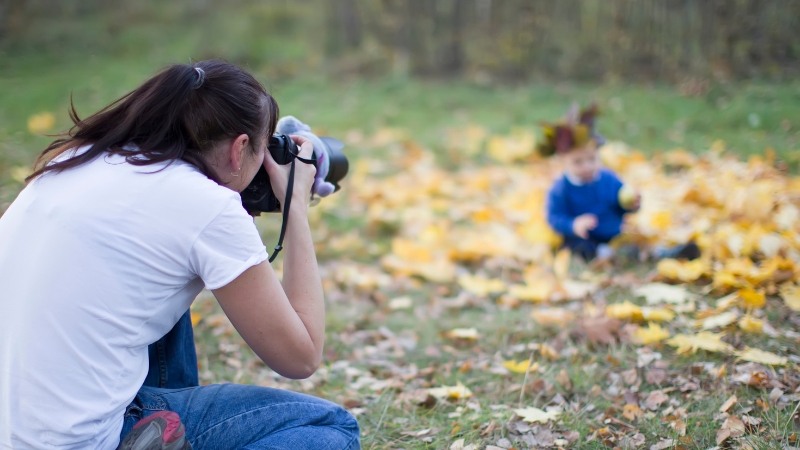Yes, in many places, it is legal to photograph or film a child in public places without explicit permission.
However, the legality becomes trickier when the image is published, used commercially, or taken in places where the child (or their guardians) has a reasonable expectation of privacy.
Also, laws about child pornography, voyeurism, and data protection may impose strict limits or criminal penalties if the photograph is sexualized or exploited.
In short: just because something is technically legal doesn’t mean it’s always ethical or risk-free. You need to pay attention to privacy, consent, and the purpose and context of the image.
The Law Begins With Context

Photography laws depend heavily on context, meaning the setting, purpose, and the child’s age. Most democratic countries operate under a principle called the “reasonable expectation of privacy.”
This means that if someone, including a child, is in a place where privacy is expected, a home, bathroom, changing room, or enclosed classroom, photographing them without consent is illegal. But in open public spaces where anyone can be seen, there is generally no expectation of privacy.
For example, taking a photo of children playing in a public fountain or running in a marathon is not automatically against the law in the United States, Canada, or the United Kingdom. The same act, however, might violate personal privacy rights in France or Germany, where “right to one’s image” laws are stricter.
Even within the same country, laws differ; several U.S. states have unique statutes on “voyeurism,” “harassment,” or “child protection” that redefine what counts as an illegal recording.
The distinction between public and private space can be summarized in the following table:
| Setting | Legal Expectation | Typical Rules |
| Public places (parks, streets, beaches) | Low expectation of privacy | Usually legal to photograph or film, unless harassment or sexualization occurs |
| Private property (homes, yards, classrooms) | High expectation of privacy | Requires consent from the parent or property owner |
| Semi-private areas (events, schools, sports clubs) | Moderate expectation | May require written consent from parents or organizers |
| Sensitive spaces (bathrooms, changing rooms) | Full privacy expected | Strictly illegal, may qualify as voyeurism or child exploitation |
Understanding Consent: The Cornerstone of Child Photography
Consent lies at the center of every question about photographing or filming minors. In most jurisdictions, children under 18 cannot legally provide consent for photography on their own. Instead, that authority rests with parents or legal guardians.
This means that while it may be legal to take a photo of a child in public, it is not legal to use that photo for commercial gain, for example, in an advertisement, brochure, or social media campaign without parental permission.
Even editorial photographers and journalists have ethical obligations that go beyond the law. News outlets often choose to blur children’s faces or avoid using names, even when no law forces them to.
The reason is simple: children cannot always understand the long-term consequences of having their image made public. In several countries, such as the UK and Australia, schools and youth organizations require parental consent forms before filming events or posting group photos online.
In Europe, the situation becomes more complex under GDPR (General Data Protection Regulation). A photograph of a child counts as personal data if they can be identified, even indirectly.
Therefore, any online sharing of that image, whether on a company website or social media page, constitutes “processing” of personal data. This requires legal justification and, in the case of minors, almost always requires parental consent.
The rule of thumb is simple: photographing may be legal, but publishing or distributing the image without permission may not be.
| Type of Use | Consent Required | Legal Status |
| Personal, private use (family photo, art) | Not required | Legal in most countries |
| Editorial or news reporting | Often not required if public interest applies | Legal but ethically sensitive |
| Commercial or advertising use | Always required (parental consent + release form) | Illegal without written consent |
| Online publication (social media, blogs) | Parental consent recommended | Legal gray area; privacy risk if identifiable |
| Exploitative or sexualized content | Never permitted | Criminal offense under child protection laws |
When “Legal” Becomes “Unethical”
Legality is only half the story. Many situations that are technically lawful can still be deeply unethical or socially unacceptable.
For example, a photographer might legally take a picture of children at a parade, but publishing it without context, especially if the caption or framing misrepresents the situation, could damage reputations or cause distress.
Another gray area involves persistence. Repeatedly photographing a child, following them from place to place, or zooming in with a telephoto lens can be interpreted as stalking or harassment, even if the photographer never physically touches the child.
Many U.S. states, including California and New York, have laws protecting individuals from “intrusive photography” when the intent is to harass or distress.
Parents have every right to ask a photographer to stop or delete photos, even when the act itself isn’t illegal. Refusing to respect that request might not get you arrested, but it could result in civil action or confrontation.
Ethically responsible photographers usually choose transparency, introducing themselves, explaining their purpose, and offering contact information for consent forms when appropriate.
The Risk of Exploitation and Criminal Laws
Every country maintains strict legal frameworks designed to protect children from exploitation, and photography plays a major role in that effort. Any image that sexualizes a child, even indirectly, is almost certainly illegal.
Laws against child pornography, child sexual exploitation, and voyeurism cover far more than explicit sexual acts. Even non-nude images may be criminal if they are produced or distributed for sexual gratification.
In the United States, the federal definition of child pornography includes any visual depiction of a minor engaged in sexually explicit conduct, or any image that focuses on the genital area for sexual stimulation.
View this post on Instagram
Similar definitions exist under the UK’s Protection of Children Act 1978 and Canada’s Criminal Code Section 163.1. These laws carry severe penalties, including imprisonment and registration as a sex offender, even for possession or sharing.
An equally serious but often overlooked offense is “voyeuristic recording.” Secretly filming a child in a bathroom, changing room, or through a window, even fully clothed, can qualify as a criminal invasion of privacy.
In the EU and UK, this is classified as “upskirting” or “non-consensual recording,” punishable by imprisonment. In many countries, intent does not need to be proven; the act itself is enough.
| Offense | Typical Legal Classification | Possible Penalty |
| Taking or sharing sexualized images of minors | Child pornography/exploitation | 5–20 years imprisonment (varies by jurisdiction) |
| Secret filming in private spaces | Voyeurism/privacy invasion | 2–10 years imprisonment |
| Persistent photographing or following | Harassment/stalking | Fines or jail, restraining orders |
| Commercial use without consent | Violation of image or publicity rights | Civil damages, injunctions |
How Laws Differ Around the World

The biggest challenge is that photography and consent laws differ drastically across jurisdictions. What’s acceptable in one country could be illegal in another. In the United States, the First Amendment protects the right to photograph in public, making street photography, even of minors, largely permissible.
The law focuses on the act of publication, not the act of taking the photo. However, individual states can add restrictions. For example, Illinois and California have privacy and harassment laws that could apply if the subject feels endangered or followed.
In the United Kingdom, the situation is similar: photographing children in public is not against the law. However, using the photo for commercial purposes without consent, or taking it in a way that breaches privacy, could lead to civil action.
The National Society for the Prevention of Cruelty to Children (NSPCC) recommends always obtaining written parental consent for identifiable photos used by organizations or schools.
In Canada, photographing people in public, including minors, is generally allowed, but publishing identifiable images of children online without consent may violate provincial privacy laws. Schools and sports clubs almost always require consent forms.
In the European Union, the GDPR introduced new complications. A child’s image counts as personal data if they are identifiable, meaning that online publication requires a legal basis such as consent or legitimate interest. Member states like France, Germany, and Italy also have strong personality rights that give people control over their likeness, even in public.
| Country / Region | General Rule | Consent Required for Publication | Notes |
| United States | Legal to photograph in public | Yes, for commercial use | Strong free speech protection, but state laws vary |
| United Kingdom | Legal to photograph in public | Recommended for identifiable minors | Ethical guidelines by NSPCC |
| Canada | Legal in public spaces | Required for publication in most cases | Varies by province |
| European Union | Varies by state; GDPR applies | Yes, for identifiable minors | Strong privacy protections |
| Australia | Legal in public, consent for commercial | Yes | Some states restrict school/event filming |
| Japan | Legal in public, consent for minors recommended | Yes, especially for online use | Social norms discourage public child photography |
Conclusion
@the.law.says.what can you legally film kids like this?? #fyp #law #reactionvideo #edutok #lawtok #hilaryduff #filming ♬ original sound – The Law Says What?!
Legally, taking a photo or video of a child in public is often allowed, but that’s the beginning of the analysis, not the end. The true legal risk lies in what happens next: how the photo is used, where it is shared, and whether it violates privacy or child protection laws.
Florida law, for example, sets the minimum dropout age at 16, reminding us how state laws draw clear lines when minors are involved, even outside education.
In private spaces, or when the child is the clear subject, consent from a parent or guardian is essential. Commercial uses without consent are prohibited almost everywhere, and any sexual or exploitative use is a serious criminal offense.
Ethically, photographers and bystanders share a collective responsibility to protect the dignity and safety of children. The rise of smartphones and social media means images travel further and faster than ever before, often stripped of context.
Respect, transparency, and consent are therefore the most important tools anyone with a camera can carry.

